some thoughts on photography
2023-01-02
bookshelf
liaison
japanese/english bilingual assistance for artists, galleries, museums, and art-related institutions.
exhibition coordinator
assistance with curation, artwork fabrication, international and local (japan) shipping, customs and import taxes, press promotion, artwork sales, consignment contracts, onsite interpretation, sourcing materials, art packing and handling advice, social media, hotel and restaurant booking, and random last minute emergencies 🚨
writing
exhibition statements, artist profiles, critical analyses, interviews, etc.
translation
my standard rate is 20 yen per japanese character for japanese to english translation, and a little less for english proofreading only. rates may be adjusted depending on the schedule and difficulty of the text.please note that i am a native english speaker, and japanese is my second language. my speciality lies in translation to english, but as of yet, not the other way around.for full transparencyー please note that i have begun incorporating chatGPT into my work flow.
art consulting
tailored guidance for artists and galleries seeking to enter or deepen their presence in japan. what do japanese people like? what will they buy? who will buy it? at what pricepoint? how do i get media features and foot traffic? whether you're planning an exhibition in tokyo or exploring the local market for the first time, i'll help you make it a success.
art writing
translations
Museum of Contemporary Art Tokyo: MOT’s 30th Anniversary Exhibition Choreographies of the Everyday (various exhibition text)
Jose Parla: Home Away From Home (exhibition catalog, Kotaro Nukaga, 2025)
Yoshirotten: Future Nature II in Kagoshima @ Kirishima Open-Air Museum, 2024 (various exhibition texts)
Under Current (exhibition catalog, Shanghai Powerlong Museum, 2024)
Akira Tatehata: The Multiplicity of Identity – The World of Tomokazu Matsuyama (2024)
Yuichi Hirako: Inheritance, Metamorphosis, Rebirth @ Nerima Art Museum (various exhibition texts)
Yutaka Kikutake: Between Hatakeyama and Sugiura (Window Research Institute)
art writing
篠崎恵美「meridiem」*英語のみ
translations(日→英)
開館30周年記念展 日常のコレオ @ 東京都現代美術館
ハン・ネフケンス財団との共同プロジェクト シャハナ・ラジャニ @ 東京都現代美術館
大坂紘一郎「shohei takasaki: couch on the hill (the tower will fall in two weeks) 」
YOSHIROTTEN: future nature II in kagoshima @ 霧島アートの森(various exhibition text)
under current (exhibition catalog, shanghai powerlong museum, 2024)
「平子雄一×練馬区立美術館コレクション[遺産、変形、再生]」展 (various exhibition text)
CV
Current
Independent curator, art coordinator, and consultant2021 - 2025 | Gallery Common
Assistant Director2021 | KOTARO NUKAGA
Exhibition Coordinator2020 | Audioforce Tokyo
A&R/Production Assistant2020 | König Tokio
Gallery Assistant2016 - 2019 | Kaikai Kiki Gallery
Gallery Manager & Exhibition Coordinator2014 - 2016 | Temple University Japan
Bachelor of Arts, Psychology
Some shows I've coordinated:
Yoshitomo Nara, Drawings: 1988 - 2018 Last 30 Years, Kaikai Kiki Gallery (2018)
Virgil Abloh, PAY PER VIEW, Kaikai Kiki Gallery (2018)
Daido Moriyama, DAIDO HYSTERIC, Gallery Common (2022)
James Jean, Azimuth, Kaikai Kiki Gallery (2018)
Bernard Frize, Concurrent Exhibition at Perrotin x Kaikai Kiki Gallery (2019)
Felipe Pantone, Manipulable, Gallery Common (2022)
Matthew Brandt, Little Puddles, Gallery Common (2024)
Carlos Rolón, Future Reminisce, KOTARO NUKAGA (2021)
Matthew Stone, Human in the Loop, Gallery Common (2023)
MADSAKI, Here Today, Gone Tomorrow, Kaikai Kiki Gallery (2017)
Austin Lee, Serious Works, Kaikai Kiki Gallery (2017)
Some stuff I've curated:
Lisa Woite, The Shape of Sacred Space (2025)
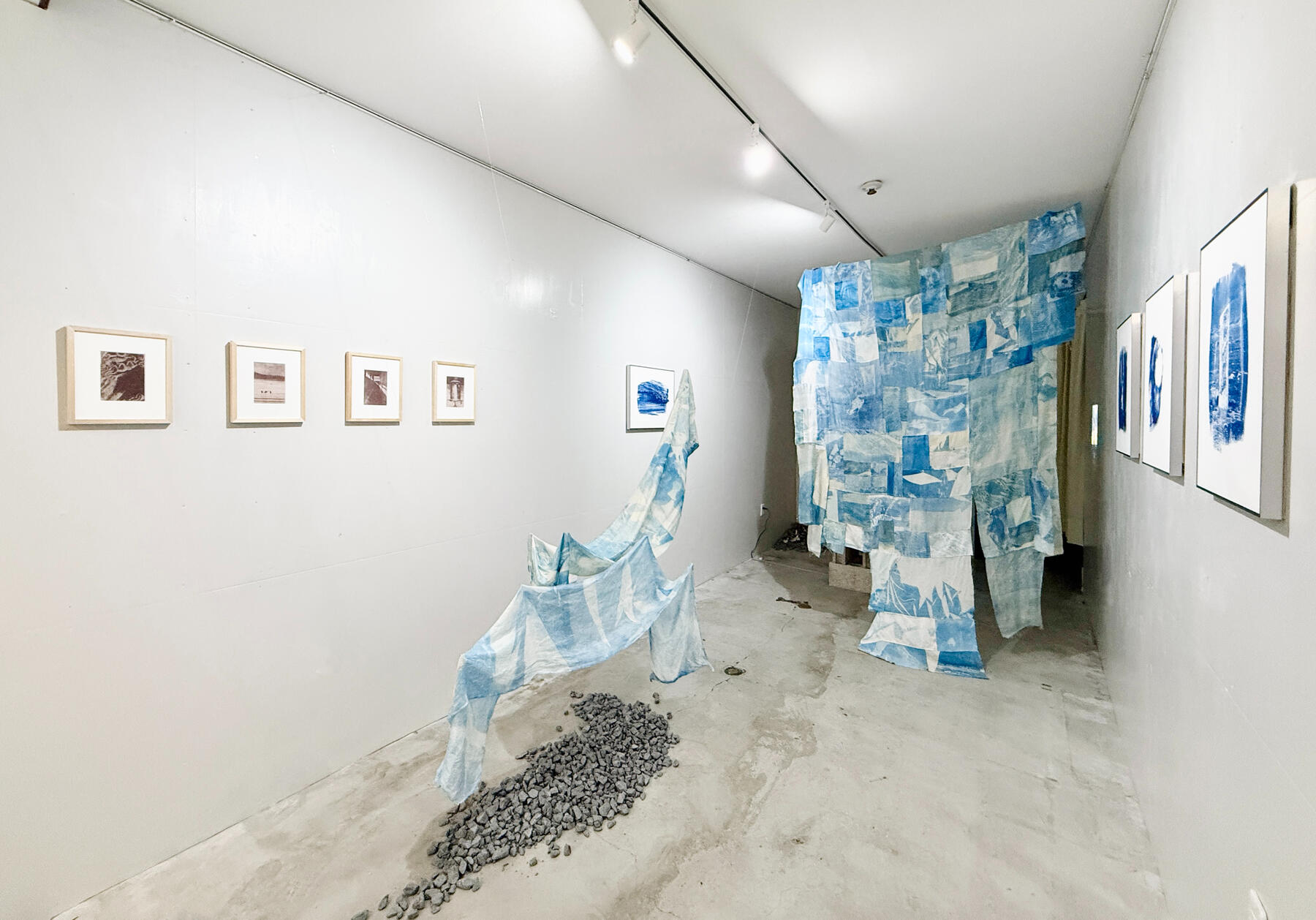
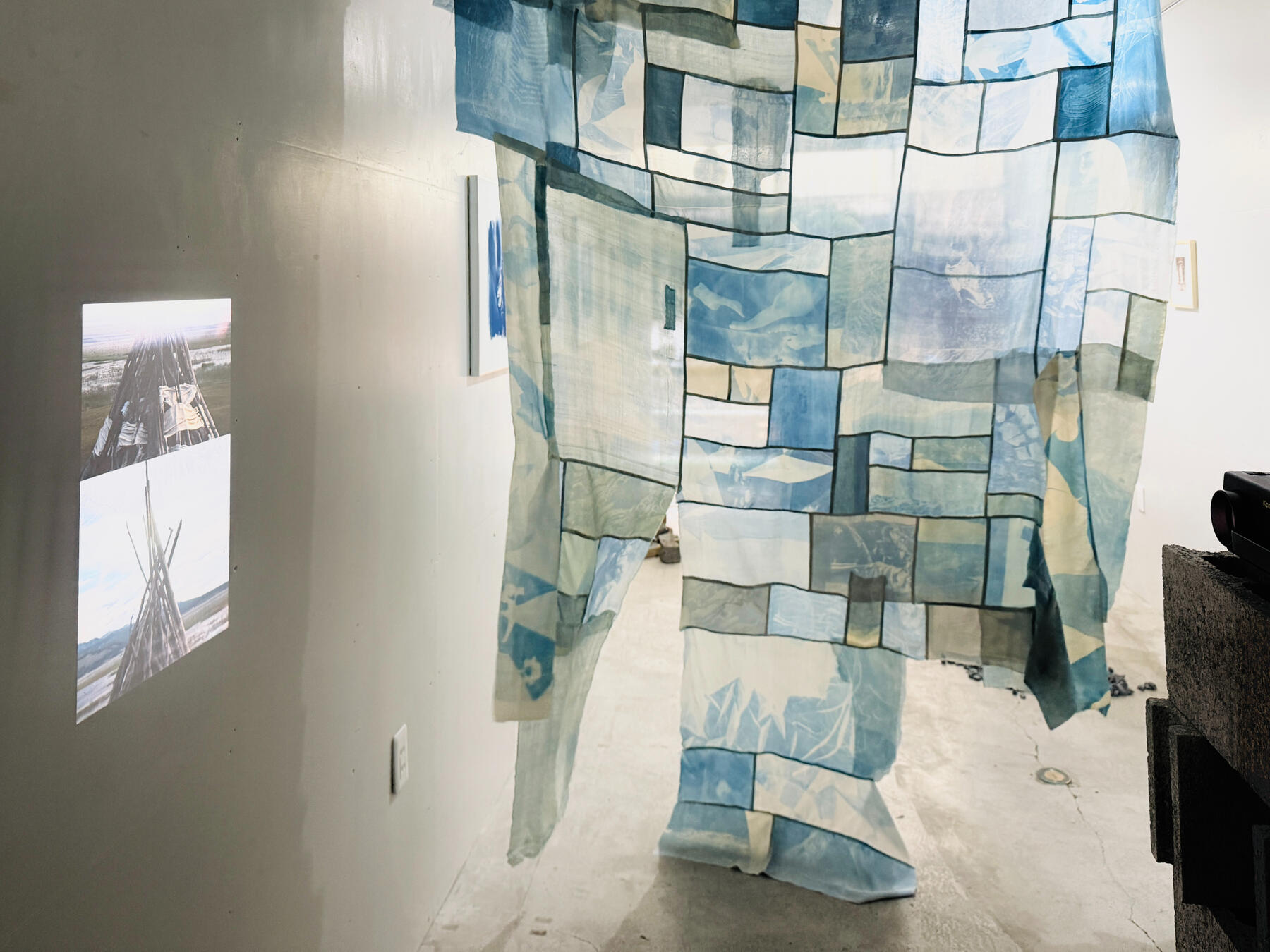
Gallery Common @ NADA Miami (2024)
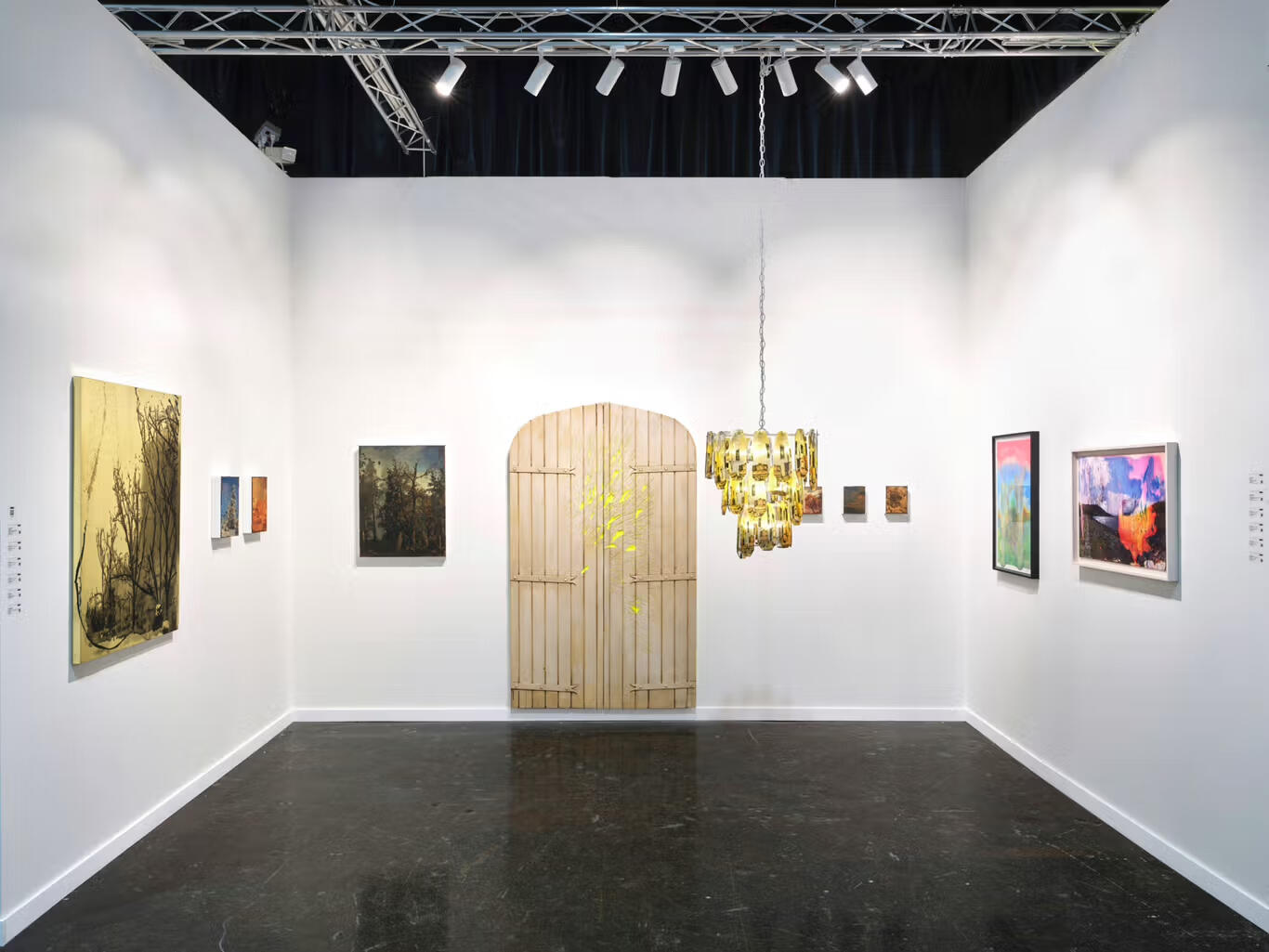
Gallery Common @ Taipei Dangdai (2024)
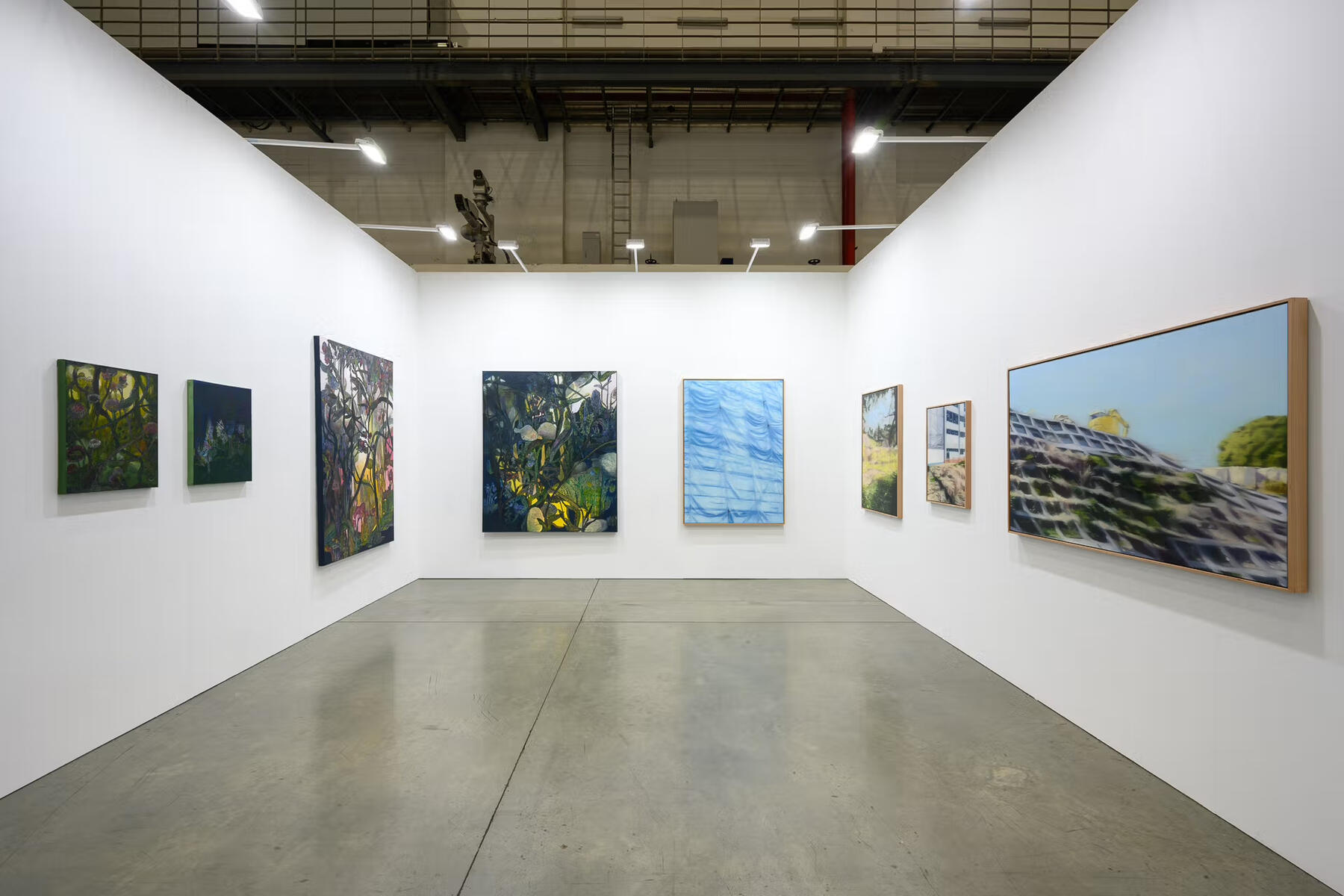
Eudaemonia, Gallery Common (2024)
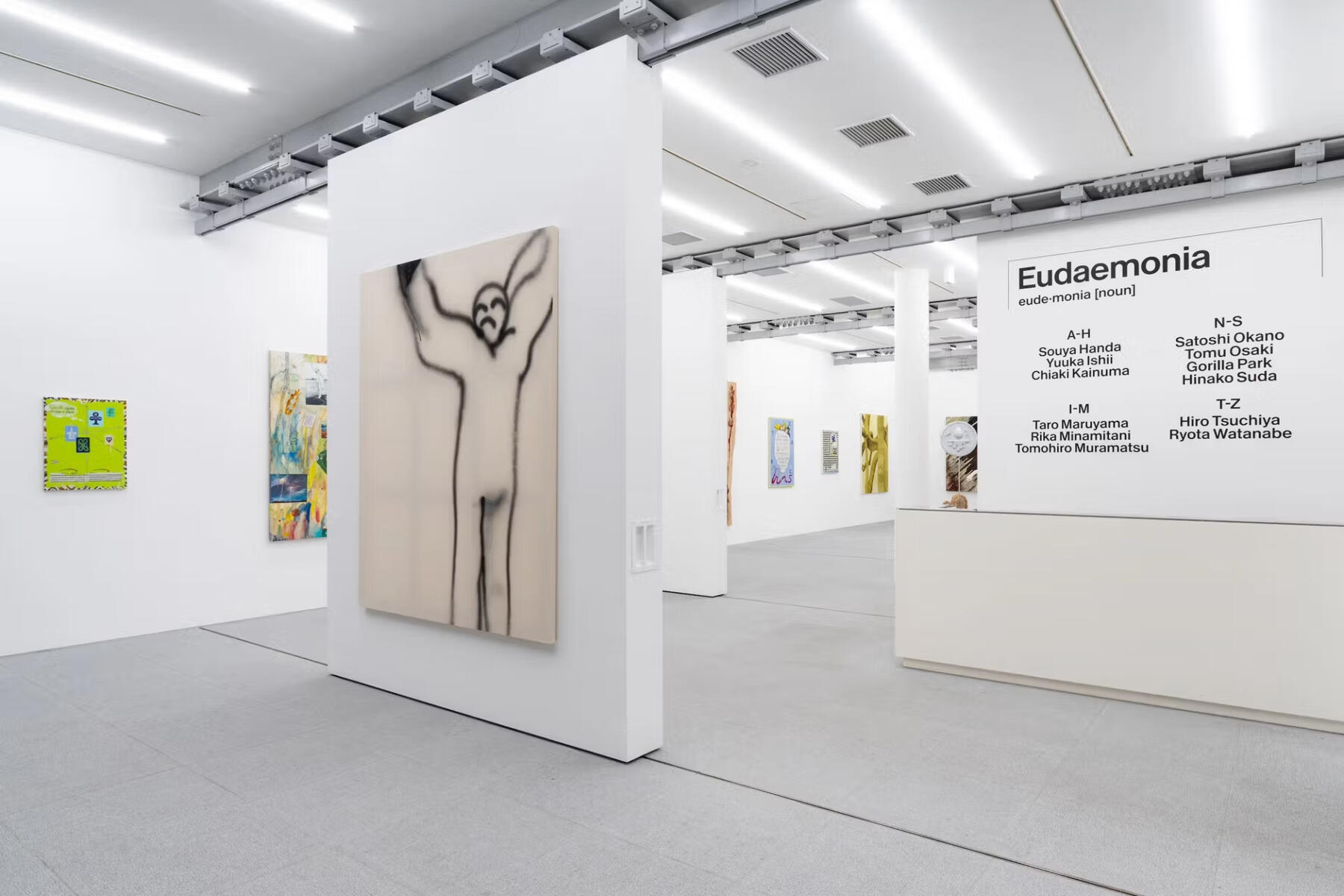
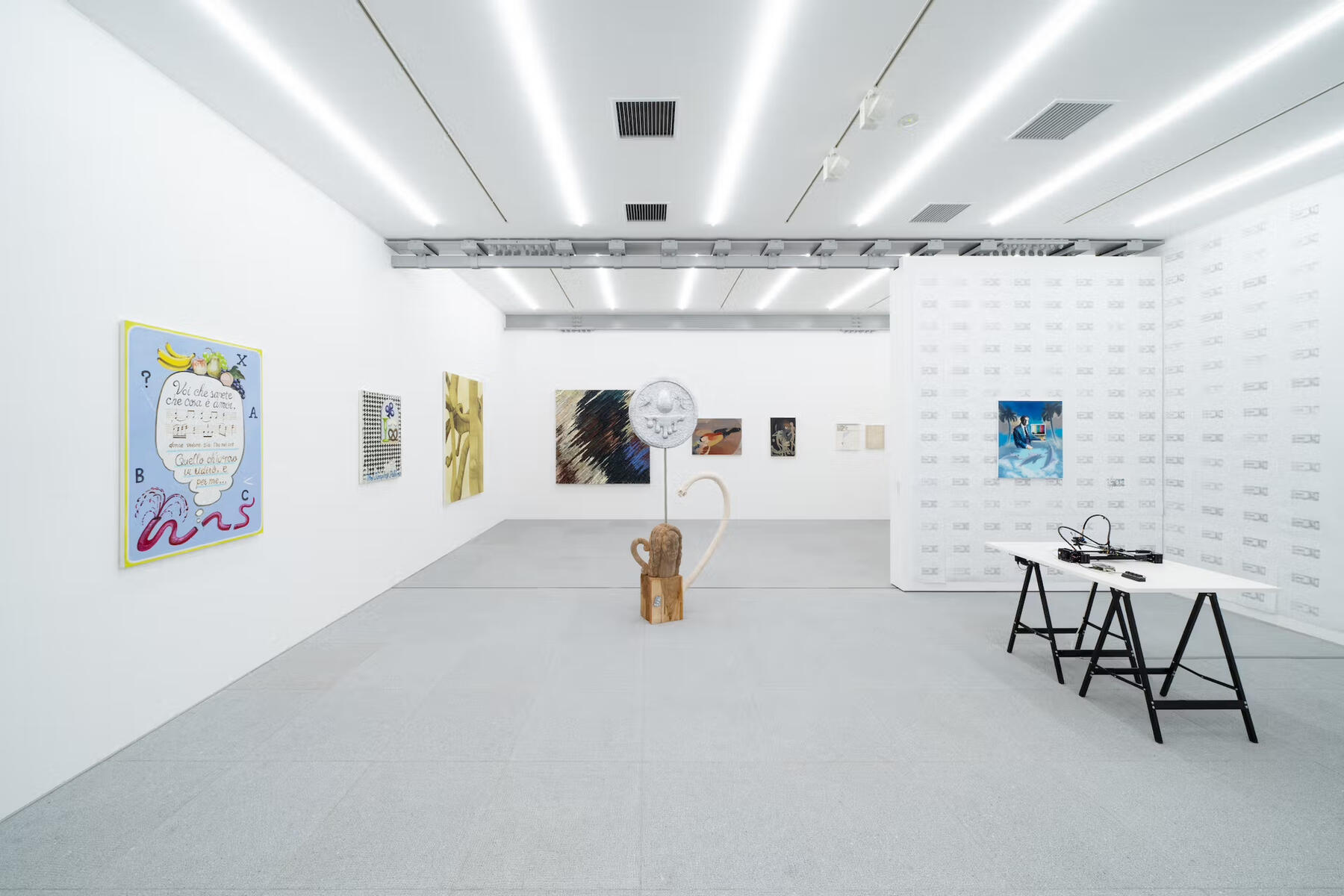
Tempered Temporality, Sono Aida Yurakucho (2022)
co-curated with Kana Miyazawa and Erika Yoshii
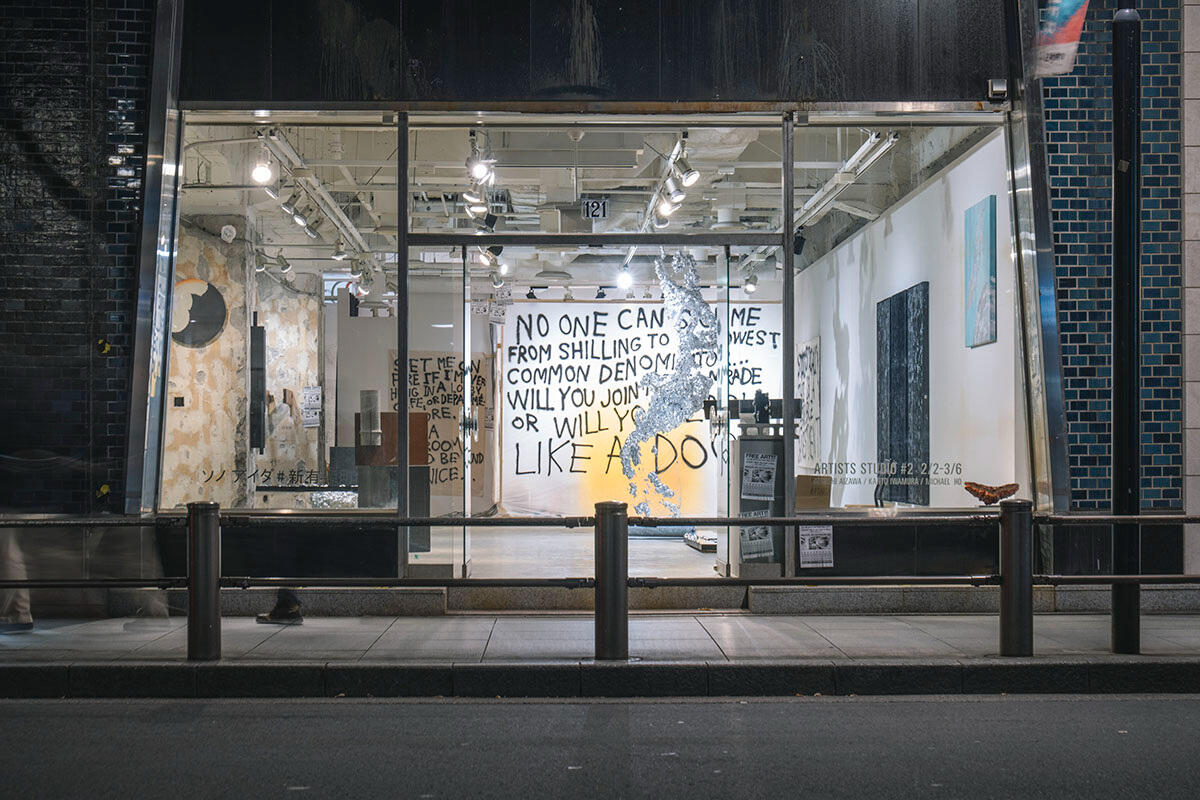
Dismantling the Myth of the Universality of Beauty
Hiroki Yamamoto
(Cultural studies scholar / Lecturer at Kanazawa College of Art)
English translation by Erika Dreskler
Published in Die Young, Stay Pretty exhibition catalog, KOTARO NUKAGA, 2024
This text was written as a critical review of the group exhibition ‘Die Young, Stay Pretty’ which was held at KOTARO NUKAGA, Roppongi in 2023. The exhibition was co-curated by Carlos Rolón and Tomokazu Matsuyama, two contemporary artists with active and ongoing international careers. Rolón and Matsuyama’s curatorial approach to this exhibition is based on what I feel to be, above all else, a careful and intentional respect for the perspectives of the artists. Rather than attempting to force the artists into the confines of existing theoretical frameworks, they opted to preserve ample room for viewers to think independently, and the works, which astutely embodied each curator’s thoughts regarding the spirit of the present, were exhibited in an experimental manner.In his curatorial statement for the exhibition, Matsuyama describes its aim as follows: “As the heralds of expression, what artists have the ability to do is to use this moment in time we call ‘now’ as a common ground to give form to the mutual understanding and organic resonance that can arise only between artists.” Just as Matsuyama describes, the common ground of a shared present allows the artworks to weave together into a multilayered form, and the “mutual understanding and organic resonance” that takes shape from this process is presented in visual and sensory forms throughout the exhibition. Accordingly, the purpose of this text report is to analyze “the now” as it is embodied through the works Rolón and Matsuyama have selected as curators and participating artists. Specifically, this analysis aims to take a slightly different, more academic angle than that intended by the two curators. In doing so, I would like to focus not only on the individual works and artists in the exhibition, but also listen carefully to the mutual understandings and resonances that they collectively give shape to.I once analyzed Tomokazu Matsuyama's artistic practice from the perspective of the “aesthetics of postcolonialism.” As a non-white person who moved to New York by himself at a young age, it is not difficult to imagine that Matsuyama must have faced much unwarranted discrimination and prejudice in order to survive as an artist in the harsh environment of one of the centers of the contemporary art world. Although such experiences must have undoubtedly influenced his work, Matsuyama has resisted the Western-centric authority ingrained within the existing art system by devising his own unique approach to utilizing a mixture of non-Western elements within his works. In his painting "Home Salvation Toner" (2022), Matsuyama freely juxtaposes various motifs, transcending the Western conception of East/West, periods of time, and even the dichotomy between "high" and "low" that persists in the art world (as seen in the mundane, everyday objects that make noticeable appearances in this work).Postcolonialism is a field of study which critically examines the effects past colonialism continues to have on the present in order to create a more just future. As such, the field naturally also critically dissects and examines the core elements of colonialism, such as Western-centrism and androcentrism, and the persistence of such ideologies in the contemporary world. By consciously incorporating within his works Japanese elements that are often judged by the West to be "irrational," Matsuyama attempts to overthrow the hierarchy which places the West at its summit, thereby challenging a postulate of "universal beauty" that has become widely accepted as a given but in actuality is one that has been gradually formulated over the course of the long history of the establishment of Western aesthetics. The "aesthetics of postcolonialism" that Matsuyama embodies has the potential to fundamentally reconfigure the fields of aesthetics and art history– it is radical. And the curation of this exhibition also demonstrates, to the fullest, this radicality.Although we must not entirely reduce the concerns and intent of an artist'’s practice to their roots and identity, the co-curator of the exhibition, Carlos Rolón, who is of Puerto Rican lineage and was born in the U.S., shares with Matsuyama a deep interest in the aesthetics of postcolonialism. Rolón’s paintings in the exhibition, such as "“Discovery in the New World II"” (2023) and "“Discovery in the New World III"” (2023), depict colorful flowers drawn in oil paint on resplendent 24-karat gold leaf bases. These works are a continuation of his previous interest in exploring, through the visuality of art, the transformation of spirituality and institutions of culture and beauty in the wake of the irreversible event of colonial rule.Based on the curators’ shared interest in a postcolonial world and culture, I interpreted the exhibition as an attempt to dismantle the myth of "universal beauty"– a myth which has been created through a long historical process that placed the Western world at its center– and to foreground instead beauty’s rich diversity and multilayered nature. It is important to note that they are not trying to accomplish this by merely substituting the Western with the non-Western. The curators understand that even if they were able to deconstruct the myth of Western universality surrounding beauty in such a way, positing a non-Western universality would only end up giving rise to a new centrism. This is illustrated by the obvious yet easily overlooked fact that more than half of the exhibition's participating artists include American and European artists: Candida Höfer, Sayre Gomez, Erwin Wurm, Marilyn Minter, and Joel Mesler.Among them, American-born artist Marilyn Minter draws on her background in painting and photography to examine contemporary notions of beauty by appropriating images of celebrities from high-fashion advertisements and various mass media. Minter's featured painting (photographic work) in the exhibition, "I C Gaga" (2018), realistically depicts (represents) the vague figure of a white (presumably Western) woman, her image blurred as if behind a glass window. In this "society of the spectacle" (Guy Debord), where all things material and immaterial are commodified until they become nothing more than an accumulation of images, the work casts a critical eye on images of the male-female binary and gendered bodies that are consumed in a completely passive manner– images constructed by none other than the anonymous “male gaze", as described by Laura Mulvey.Within the academic context, there have been many attempts in recent years to reconstruct the very foundations of the field of Western aesthetics by tracing back to its originators such as Baumgarten and Kant. To take an example from Japan: Shun Takagi, a scholar specializing in Kantian aesthetics and philosophy, published the book Introduction to Kant's Critique of Judgment: Beauty and Gender (Yoakusha) in 2023. Takagi explains Kant's foundational and infamously difficult treatise on aesthetics, Critique of Judgment (1790), in an accessible manner, while simultaneously referencing the findings of gender studies. In doing so, the biased standards of male-centric and patriarchal conceptions of beauty contained therein are brought to light. While retracing the discipline of aesthetics genealogically, Takagi proposes a radical reconsideration of the androcentrism that molds our “universal” ideas of beauty. Minter's artistic practice resonates with this very trend.The concept of "universal beauty" is currently undergoing a reappraisal from non-male-centric perspectives; that is, from the standpoint of gender studies, feminism, and numerous other frameworks. One example is the book Disability Aesthetics by Tobin Anthony Siebers, which was published in 2010 (University of Michigan Press). In the book, Siebers disputes the conception of beauty as being something that is perfect or not lacking in any way. In other words, he questions the historical assumption that beauty necessarily requires the condition of perfection. Takuro Kuwata, who contributed a 1.85 meter tall ceramic work, "Untitled" (2015), to the exhibition, has a practice that is interesting to consider from this viewpoint. Kuwata’s works incorporate traditional ceramic techniques such as kairagi (a glazing method of Korean origin that produces a cracked glaze effect on the foot of an idojawan style tea bowl) and ishihaze (whereby the texture of sand grains embedded within the clay is exposed upon firing, creating an uneven surface). By using elements and phenomena that have long been regarded within traditional ceramic techniques as failures or simply just as ugly (not beautiful), Kuwata is able to create works that inspire reinterpretation.Huma Bhabha, like Rolón, Matsuyama, and Kuwata, was born in a corner of the non-Western world. Her sculptures and collages, which cross-reference art history and various academic disciplines, reject a Western-centric monophyly of images of beauty. Bhabha hails from Karachi, Pakistan, once a colony of the former British Empire, and her works refer to an extensive range of cultural history spanning from East to West, ancient to contemporary. Through this approach, Bhabha suggests alternative, hybrid, and perhaps at first glance even strange forms of beauty, such as in the work "Untitled" (2015), which is featured in the exhibition."Die Young, Stay Pretty", co-curated by Carlos Rolón and Tomokazu Matsuyama, is a challenging and radical exhibition that critically attacks the myth of universal beauty from multiple perspectives with the aim of expanding and reconstructing it. This endeavor resonates with the current academic tide. As a result of the two’s partnership, I believe we can look forward to further developments in the difficult mission of dismantling the myth of the universality of beauty.
「美の普遍性」という神話を解体する
山本浩貴(文化研究者/金沢美術工芸大学講師)本稿は、2023年に六本木のKOTARO NUKAGAで開催されたグループ展「ながくとも四十に足らぬほどにて死なんこそめやすかるべけれ(Die Young, Stay Pretty)」(以下、「ながくとも」と省略)の批評文として執筆された。この展覧会では、ともに現在進行形で旺盛な国際的活動を展開する現代アーティストである、カルロス・ロロンと松山智一が共同でキュレーションに携わった。「ながくとも」展では、ロロンと松山があえてアーティストとしての目線を何よりも大切にし、杓子定規なやり方で既存の理論的枠組みにアーティストを当てはめていくのではなく、鑑賞者に対して思考の余地を十分に残したまま、両キュレーターが考える「現在」の空気をシャープに具現化する作品が実験的な仕方で提示されている——そのように筆者には感じられた。実際、「ながくとも」展に寄せた「キュレーター・コメント」のなかで、その展覧会のねらいについて、松山は次のように語っている。「表現をする当事者であるアーティストができることは、作家同士だからこそ起きる相互反応、有機的な共鳴を“今”という時間を共通項にして形にすることです。」松山の言葉通り、この展覧会の全体を通して、「“今”という時間を共通項にして形」となった、各アーティストの作品が重層的に織りなす「相互反応、有機的な共鳴」が、主に視覚的・感覚的な容態として示されていた。こうしたことを踏まえて、本稿の目的を説明すると、アーティストとしても作品を出しているロロンと松山、そして彼らが選定したアーティストたちの作品が体現する「“今”という時間」を、2人のキュレーターの意図とは少し異なる角度、具体的にはよりアカデミックな角度から解析することである。その際、この展覧会に出展されている個別の作品や作家に着目すると同時に、それらが集合的に形成する「相互反応」や「共鳴」にも注意深く耳を傾けたい。かつて筆者は、松山智一の芸術実践を「ポストコロニアリズムの美学」という視座から論じたことがある。若くして単身で「現代アートの中心地」のひとつであるニューヨークに移住し、過酷な環境のなかを今日までアーティストとしてサバイブしてきた松山が、ひとりの非白人として、不条理な差別や偏見に直面することも多かったであろうことは想像にかたくない。そうした経験もいくらかは影響しているのであろうが、松山は、既存の美術制度が不可避的にはらむ西洋中心的な権威性に対して、彼独自の仕方で非西洋的な要素をミックスさせていくことで抵抗を示してきた。絵画作品《Home Salvation Toner》(2022)では、洋の東西をこえ、時代をこえ、さらには美術領域に根強く残る「ハイ」と「ロー」の二項対立さえもこえて(例えば、この作品には、私たちが日常的に使用する品々が印象的に登場する)、多様なモチーフが自由自在に並置されている。「ポストコロニアリズム」は、過去の植民地主義が現在に残す影響を批判的に考察することで、公正な未来を作り上げていくことを目的とした学問分野を指す。そこでは、当然ながら、植民地主義を構成する欠くべからざる要素である西洋中心主義や男性中心主義、そして現代世界におけるそうしたイデオロギーの残存が批評的な審問にさらされることとなる。西洋では「不合理」と判定されがちな日本的要素を意識的に現代アートの作品に持ち込むことで、松山は西洋を頂点とするヒエラルキーの転覆を企て、さらには西洋美学が確立される長い歴史のなかで徐々に構築されてきた、私たちの多くが所与の感覚として受け入れている「普遍的な美」の公準に対して異議を申し立てる。松山が体現する「ポストコロニアリズムの美学」は、「美学」や「美術史」といった確立された領域を根本的に再構成する可能性をもったラディカルなものであり、そのラディカルさは「ながくとも」展のキュレーションにおいても十分に発揮されている。アーティストの実践にまつわる関心や意義を全面的にルーツやアイデンティティのみに還元することは適切ではないが、アメリカに生まれ、プエルトリコのルーツをもつ、「ながくとも」展のもうひとりのキュレーターであるカルロス・ロロンは、こうした「ポストコロニアリズムの美学」への関心を松山と深く共有するアーティストである。事実、ロロンがこの展覧会に出展した、壮麗な24金の金箔を下地として油絵具で色とりどりの花々が描かれた《Discovery in the New World II》(2023)や《Discovery in the New World III》(2023)といった絵画作品は、芸術の視覚性を通して、植民地支配という不可逆的な出来事を契機とした文化や美をめぐる精神性や制度の変容を探求する、これまでの彼の関心と地続きとなっている。松山とロロンは、こうしたポストコロニアルな世界や文化への共通の関心から、この「ながくとも」展において、西洋世界を中心として長い歴史のプロセスのなかで構築されてきた、「普遍的な美」という神話の解体を目指し、その豊かな多様性や重層性を前景化しようとしていると筆者は解釈した。注目に値することは、彼らがそれを西洋的なものから非西洋的なものへの単なる置き換えによって達成しようとしているわけではないことである。たとえ「美」をめぐる西洋的な普遍性の神話を脱構築したとしても、そこに非西洋的な普遍性を仮構してしまったら、新しい中心主義を生成してしまうだけで終わることを、「ながくとも」展のキュレーターたちはよく理解している。このことは、この展覧会の参加アーティストにアメリカやヨーロッパの作家——カンディダ・へーファー、セイヤー・ゴメス、エルヴィン・ヴルム、マリリン・ミンター、ジョエル・メスラー——が半数以上含まれているというシンプルだが見落とされがちな事実によく表れている。そのなかのひとりであるアメリカ生まれのアーティスト、マリリン・ミンターは、絵画と写真のバックグラウンドを活かし、ハイファッションの広告やマス・メディアなどで流通するセレブリティのイメージを流用しながら現代における「美」の観念を精査する。「ながくとも」展に出展されたミンターの写真作品絵画《I C Gaga》(2018)は、このうえなくリアルでありながら、ガラスを透過したようにおぼろげに映る(おそらくは西洋の)白人女性を表象することで、有形無形のあらゆるものが商品化され、イメージと化すまでに蓄積の度合いを増していく「スペクタクルの社会」(ギー・ドゥボール)のなかで徹底的に受動的な仕方で消費されていく男女二元論的な性やジェンダー化された身体のイメージ——それは匿名的な「男性のまなざし」(ローラ・マルヴィ)によって構築された男性中心的なイメージに他ならない——に対して批評的なまなざしを投げ返す。ここでアカデミックな文脈を挿入すると、近年、バウムガルデンやカントといった西洋圏における「美学」という領域の始祖たちにまでさかのぼり、その再構成を企てるような試みも盛んである。日本の事例としては、2023年に出版された、カント美学・哲学を専門とする研究者の高木駿による『カント『判断力批判』入門——美しさとジェンダー』(よはく舎)が特筆に値する。高木は、難解とされるカント美学の基礎文献である『判断力批判』(1790)をわかりやすく解説しながら、ジェンダー・スタディーズの知見を応用することによって、そこに含まれる男性中心的、家父長的な「美」や「美しさ」の偏った基準を明るみに出していく。ここでは、「美学」という学問を系譜学的に遡行しながら、「普遍的」とされてきた「美」にまとわりつく男性中心性の抜本的再考がなされている。そして、ミンターの芸術実践は、まさにこうした流れと共振している。「普遍的な美」という概念は、脱男性中心主義的な観点、すなわちジェンダー・スタディーズやフェミニズムに立脚した観点の他にも、様々な観点からの見直しが進められている。その一例として、トビン・アンソニー・シーバースが2010年に上梓した『障害美学(Disability Aesthetics)』(ミシガン大学出版会)では、完璧で、何ひとつ欠けるところのない「美」という観念への疑義が提出されている。すなわち、シーバースは「完全性」という、歴史的に当たり前とされてきた「美」を構成する条件そのものに問いを投げかけているのだ。「ながくとも」展には高さ1.85メートルの陶器の作品《無題》(2015)を出展している桑田卓郎の実践は、こうした視座から眺めると興味深い。「梅華皮」(朝鮮を起源とする井戸茶碗の高台に焼き付けられた釉薬の縮れ)や「石爆」(素地の中の砂が焼成の際に表面に露出した凹凸)といった伝統的な陶芸技術においては「失敗」、より率直には「醜い(美しくない)」とされ、長らく忌避されてきた要素や現象を桑田は積極的に再解釈し、自らの創造へと取り入れてきた。ロロンや松山、桑田と同じく非西洋世界の一角に生を享けたフーマ・ババもまた、美術史を含む様々な学問領域を横断的な参照項として制作された立体やコラージュを通して、西洋中心的な「美」のイメージの一元性に挑戦しているアーティストである。旧大英帝国の広大な植民地の一部であったパキスタンのカラチ出身のババは、この展覧会で見せている《無題》(2015)などにおいて、古代から現代に至るまでの長大な射程を備えた東西の文化史を渉猟しながら、一見すると奇妙にも見えるオルタナティブでハイブリッドな「美」の様相を示唆している。このように、カルロス・ロロンと松山智一の共同キュレーションにより実現されたながくとも四十に足らぬほどにて死なんこそめやすかるべけれ」展は、様々な視点から「普遍的な美」という名の神話に批評的攻勢をかけ、その拡張と再構成を目論む挑戦的でラディカルな展覧会となっている。そして、その動きはアカデミックな潮流とも共振している。両者が合流することで、「美の普遍性」という神話の解体という困難なミッションがさらに進展することが期待される。
Areas of interest
Continental philosophy
Literature
Cosmology
Psychology
Dance
Tech ethics
K-pop
Etymology
Foreign languages
Critical theory























